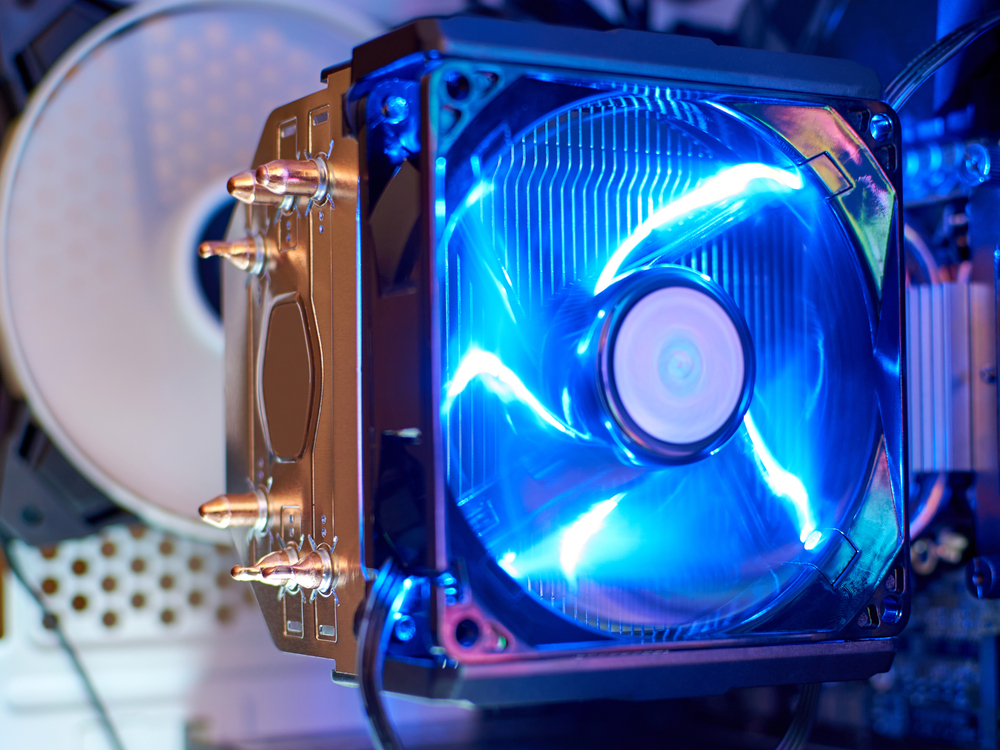Your CPU does not die of overheating, a CPU cooler is necessary. But what to do if the CPU fan is defective? We'll tell you!
 How to recognize a defective CPU cooler
How to recognize a defective CPU cooler
The CPU of a computer is considered the heart of the device. Current processors in particular have decent performance. Exactly this performance of the many CPU cores, the so-called hyperthreading and especially the overclocking make your processor sweat a lot. So that your CPU does not die of overheating, a CPU cooler is necessary. But what to do if the CPU fan is defective? We'll tell you!
The CPU fan: the most important component for efficient operation
There are a total of two methods you can use to cool your CPU. In this article, however, we will only deal with air cooling, because defects can often occur here.
The air-cooled variant consists of a heat sink that is attached to the CPU. This heat sink conducts the waste heat from the processor into the housing of your PC.
The heat exchange is accelerated by a fan attached to the heat sink. It is precisely this fan that causes problems, especially if it is a cheaper device.
We are therefore giving you some tips, hints and advice on how you can tell whether your CPU fan is really defective or whether it just needs to be cleaned again.
Find out possible sources of error
If there are problems with your CPU fan, the first thing to do is to find out the cause of this problem.
It doesn't have to be direct that your fan is defective. It is not uncommon for you to only have to clean your fan because it is too dirty and this is the cause of your problem.
Even if your problem is a strange noise, you don't need to replace the CPU fan immediately.
First check whether all screws are tightened, because if the CPU fan wobbles, it can of course cause strange noises during operation, which you then attribute to a possible defect.
If you have cleaned your fan and can rule out that the fan wobbles, then the probability that your fan is broken is very high.
Keep an eye on the CPU temperature
One of the most important signs that you can tell that your CPU fan is defective is excessive processor temperatures.
You can determine this using external software. If your CPU's temperature rises to 90 degrees Celsius, then you can be pretty sure that your fan is broken.
If the waste heat from the CPU can no longer be dissipated quickly enough using the heat sink because the fan is defective, the temperature of the processor rises enormously.
If this is the case, you should act quickly. An overheated CPU can lead to a severe drop in performance and, of course, in the worst case, a break.
The latter is particularly annoying since a good processor quickly costs money and often costs more than 400 euros. If the temperatures are between 70 and 80 degrees, you should observe the whole thing.
Although these are not critical temperatures, you are already very close to the limit here. By the way, the optimal operating temperature of your processor is a little under 60 degrees Celsius.
With this value, everything should work fine and your airflow also seems to be perfectly coordinated.
Your BIOS can tell you
Many PC users rarely look at their BIOS, where they find a lot of important information and setting options for their computer.
There you can also take a closer look at the speeds of your fans, for example. Pick out the CPU fan and take a look at its speeds.
These can give you information about whether everything is really running "round". In order to classify a defect really clearly, you have to observe the speeds over a longer period of time.
If these are consistently at 1,000 rpm or less, you can be pretty sure that something is wrong with the fan.
Of course, you don't necessarily have to call up the fan speeds via your BIOS, many fans now have their own software and there is now enough freeware for it on the Internet.
How else can I find out if my CPU fan is defective?
If the CPU is no longer being cooled correctly, this is rarely due to the heat sink but is usually only due to the rotating fan.
If you can completely rule out that it is only the fan that is wobbling and that there is no defect, you can replace the CPU fan.
Just test mount a fan from the case onto the CPU heatsink. If this works perfectly, you can dispose of the old one and look for a replacement.
However, make sure that it is installed correctly. If the CPU fan wobbles, tighten the screws a little more.
Only do this work if you are really confident in what you are doing. If this is not the case, it is better to seek external help. Otherwise, the defective fan could soon be your smallest problem.
Otherwise, simple indications such as system crash during computationally intensive work (this is due to the overheated CPU), loud noises when starting the computer and error messages when reading files from a hard disk speak for a defective fan.
What can I do if my CPU fan is defective?
The short and simple answer is to replace it. A simple fan usually costs less than 20 euros.
If your fan was new, it's better to get a slightly higher-quality model. Because if you buy cheap, you buy twice. As a rule, a CPU fan does not break easily.
The product was either of inferior quality or simply affected by excessive dirt. This is another reason why you should clean your fan regularly.






